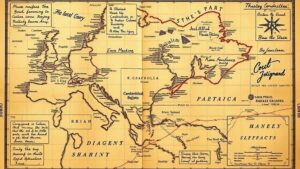Leveraging Geological Fault Data for Predicting Fossil and Mineral Rich Zones
Leveraging Geological Fault Data for Predicting Fossil and Mineral Rich Zones
Predicting fossil and mineral-rich zones is a complex task that has drawn significant attention from geologists, paleontologists, and mineralogists alike. This research article examines the use of geological fault data as a critical tool in predicting areas rich in fossils and minerals. By analyzing fault lines, their movements, and the geological processes involved, researchers can identify potential zones that hold valuable fossilized remains and economically important minerals.
Introduction
The study of geological faults encompasses the investigation of fractures in the Earths crust caused by tectonic forces. e faults can serve as conduits or traps for fossilized organisms and minerals. Understanding their characteristics allows scientists to make informed predictions about where rich deposits may lie. For example, the San Andreas Fault in California not only presents a risk for earthquakes but also has been correlated with mineral deposits, such as gold and quartz, due to the geological processes associated with faulting.
Geological Faults: Types and Characteristics
Faults are classified into several categories based on their movement patterns:
- Normal Faults: Occur when two blocks of the Earths crust pull apart, causing one block to slide downward.
- Reverse Faults: Formed when two blocks are pushed together, resulting in one block sliding upward over the other.
- Strike-Slip Faults: Characterized by horizontal movement, these faults represent shear stress and lead to lateral displacement.
Each type of fault plays a unique role in the geological landscape and influences the distribution of fossils and minerals. For example, normal faults are commonly associated with rift zones that may host significant quantities of minerals, such as those found in mining areas like the East African Rift.
Geological Faults and Fossil Deposits
Fossil deposits often occur in sedimentary layers that are disrupted by geological faults. The mechanism is most evident in regions like the La Brea Tar Pits in Los Angeles, California, where fossils of Pleistocene animals have been preserved in asphalt deposits affected by faulting. Researchers have found that the activity along faults contributes to the accumulation of organic material, which can later become fossilized.
The intersection of sedimentation and faulting creates unique environments for fossil preservation. For example, during the late Cretaceous period, the Western Interior Seaway contributed to the rich fossil deposits observed in regions affected by geological faults, such as the Niobrara Formation in Colorado and Kansas.
Mineral Deposits and Geological Faults
Beyond fossils, geological faults are instrumental in mineral exploration. Hydrothermal processes often occur along fault lines, leading to the formation of economically significant ore deposits. The presence of water, heat, and minerals creates a fertile environment for the crystallization of gems and metals, particularly in areas such as:
- Gold deposits: Found in fault-bounded structures, such as the Witwatersrand Basin in South Africa, which has produced over 40% of the worlds gold supply since its discovery in the late 19th century.
- Copper deposits: Many world-class copper mines, such as the Grasberg Mine in Indonesia, are situated in tectonically active regions that feature extensive fault systems.
Case Studies
Several case studies exemplify the link between geological fault data and fossil or mineral predictions:
- The Rocky Mountain Region: Research indicates that the Laramide orogeny led to complex fault structures that trap hydrocarbons and minerals. Studies leveraging seismic data have successfully identified zones rich in fossil fuels.
- The Appalachian Basin: Here, faulting has resulted in numerous coal deposits, with various research projects employing geological mapping to locate remaining reserves.
Conclusion
Geological fault data plays a foundational role in predicting zones rich in fossils and minerals. The interplay between tectonic activity, sedimentation, and fault dynamics creates diverse environments that contribute to mineralization and fossil preservation. Future research should focus on integrating advanced geophysical techniques, such as 3D seismic imaging and machine learning algorithms, to refine predictions further and enhance resource management.
Actionable Takeaways
- Conduct geological surveys utilizing fault data to improve accuracy in predicting fossil and mineral deposits.
- Apply interdisciplinary approaches combining geology, paleontology, and mineralogy for comprehensive resource assessments.
- Stay informed regarding technological advancements in geophysical methods that can enhance fault mapping and analysis.
By effectively leveraging geological fault data, researchers and professionals can advance our understanding of Earths resources, paving the way for sustainable extraction strategies that benefit both the environment and the economy.



